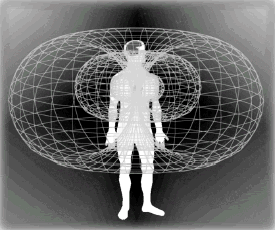
Researchers have found that cells’ bioelectrical communication steers growth and development. It is hoped that if the code can be learned, manipulating cellular signaling could be used to stave off cancer or even regenerate limbs
When Tufts University developmental biologist Michael Levin proposed tweaking cells’ electrical signals to create new patterns of growth, he encountered some resistance. “People thought it was nuts,” Levin says.
That’s because although all cells have electric potentials (defined as the amount of energy required to move a given electrical unit against an electrical field), and these potentials clearly relate to cellular properties—the assumption in most cases was that the electric potential related primarily to cellular maintenance or “housekeeping.” Disrupting a cell’s electrical potential, the conventional wisdom went, would kill it.
Yet for more than a decade Levin’s work has countered this idea. He has manipulated the electrical potentials of cells in various ways to produce a menagerie of strange beasts: tadpoles with eyes on their tails or within their guts and frogs sprouting toes at the site of an amputated leg.
In fact, Levin believes he has found a new role for the bioelectricity of cells. He posits that the pattern of cellular voltages creates a system of electric signals that direct how the body grows. He calls these signals the bioelectric code and believes they are fundamentally as important in understanding growth and development as the genes in the body or the various chemical switches that turn them on and off. Indeed, he thinks that changes in electric potentials across cells can also serve as a so-called epigenetic switch to regulate how genes function.
Although Levin may have coined the phrase “bioelectric code,” the belief that electric signals relate to patterns of growth is not a new concept. “The idea goes back a long way,” says regenerative biologist David Stocum of Indiana University–Purdue University Indianapolis. “[Levin]’s taken it to a much higher art,” Stocum says, by actually looking at cellular potentials with specialized dyes.
Some of the earliest investigations go back nearly one hundred years. In the early 20th century Yale University biologist Harold Burr placed various organisms in a voltmeter to study their electric potentials and suggested there was a link between shape and electrical properties. Then in the 1970s Lionel Jaffe, a biologist at the Marine Biological Laboratory in Woods Hole, Mass., used a probe to study electrical currents in and around cells. He noted differences in the electrical properties of creatures that could regenerate, such as salamanders, and those that could not, such as adult frogs. But much of this bioelectric research would be forgotten in subsequent decades in the rush toward molecular biology and genetics.
In recent years, researchers at the University of Aberdeen in Scotland have been examining how electric fields guide the growth of tissues during healing. But Levin’s approach is the first to look at electric potentials on the level of individual cells and how they can be incorporated into our knowledge of molecular biology.
The Latest Bing News on:
Bioelectric Code
- Feed has no items.
The Latest Google Headlines on:
Bioelectric Code
[google_news title=”” keyword=”Bioelectric Code” num_posts=”10″ blurb_length=”0″ show_thumb=”left”] [/vc_column_text]The Latest Bing News on:
Bioelectricity
- Every Agent's Real Name, Age And Country In Valoranton April 10, 2024 at 7:21 pm
Agents in Valorant have unique backstories, cultures, and abilities, adding depth and complexity to the game's lore. The Valorant Protocol recruits Radiants with superhuman abilities to prevent ...
- Pacemaker Powered By Light Eliminates Need For Batteries And Allows The Heart To Function More Naturallyon March 23, 2024 at 7:30 am
Like solar panels, this pacemaker is powered by light. Unlike conventional solar cells that are usually designed to collect as much energy as possible, we tweaked our device to ge ...
The Latest Google Headlines on:
Bioelectricity
[google_news title=”” keyword=”bioelectricity” num_posts=”10″ blurb_length=”0″ show_thumb=”left”]









